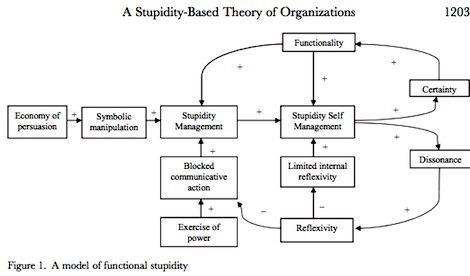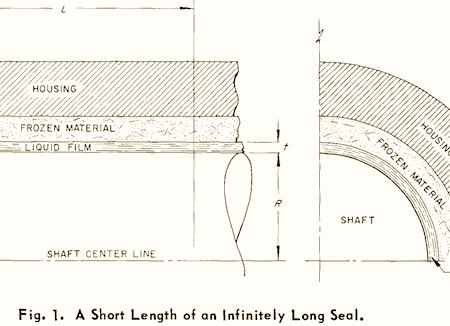Marc Abrahams's Blog, page 509
March 10, 2013
Ig Nobel show in Stockholm Monday evening
Join us at the Karolinska Institute Monday evening for talks (and then some) by rather colorful Ig Nobel Prize winners. The institute has posted details in Swedish, and you can download a poster. If for whatever reason you prefer details in English, here are some:
The Karolinska Institute, Stockholm, Berzelius väg 3, Solna, Vesalius. 5:30 pm. Featuring:
Marc Abrahams , organizer of the Ig Nobel Prize ceremony
Chris McManus , Ig Nobel Prize winner (Scrotal asymmetry in man and ancient sculpture)
Kees Moeliker , Ig Nobel Prize winner (Homosexual necrophilia in the mallard duck)
Johan Pettersson , Ig Nobel Prize winner (solution to the mystery of why certain Swedish citizens found that their hair had turned green)
Organizer: Gustav Nilsonne. Cosponsored by the Skeptics’ Association (Föreningen Vetenskap och Folkbildning).
NOTE: This is the final show in this year’s Ig Nobel tour of Scandinavia. Then it’s on to the 11th (!) Ig Nobel tour of the UK.

I ‘Heart’ Hunter-Killer Nuke Subs
 A giant fading heart might not be the first graphical device to spring to mind if you were tasked with publicly profiling the latest generation of nuclear-powered hunter-killer submarines – but the world’s number two ‘defence contractor’, the UK’s BAE Systems, consider it appropriate – having published just such a design in the November 2012 issue of Britain’s Energy Coast eMag. [link below]
A giant fading heart might not be the first graphical device to spring to mind if you were tasked with publicly profiling the latest generation of nuclear-powered hunter-killer submarines – but the world’s number two ‘defence contractor’, the UK’s BAE Systems, consider it appropriate – having published just such a design in the November 2012 issue of Britain’s Energy Coast eMag. [link below]
But why a heart? Perhaps they chose the motif because of the testing phase of the sub’s nuclear reactor, which is :
“ [...] conducted in the heart of Barrow-in-Furness in a safe and controlled manner, without the general population being aware of it.” ?
You can read (most of) the full document here : (navigate to page 17 and zoom in). Alternatively, if you’re pushed for time, or wearied by mouse-clicking, Improbable has archived a large version which can be examined here. You may find the text a challenge to read, since it fades into the depths at the bottom of the heart.
QUESTION : There are five more subs in the current ‘Astute’ series scheduled for construction - for future publications, what other bodily organs might be appropriate for graphically depicting new nuclear-powered nuclear-armed hunter-killer technology?

Economists gathering undying economics about the undead
Economics theories never die. Economists, the mortals who study these things, analyze them half, but never fully, to death. This notice shows how such things go on (and on):
Call for Abstracts
Economics of the Undead: Blood, Brains & Benjamins
Glen Whitman & James P. Dow, Editors
The editors seek abstracts for essays exploring the relationship between economics and the undead, especially zombies and vampires. The chosen essays will appear in a collection to be published by Rowman & Littlefield….
We at the Annals of Improbable Research have from time to time published material of that sort, the latest being “Co-Existence of Vampires and Humans Is Possible: Proofs Based on Models Derived from Fiction Literature, Comic Books and Films“, by Wadim Strielkowski, Evgeny Lisin, Emily Welkins. That article appears in the special Sloths & Vampires issue of the magazine.
(Thanks to investigator Rose Fox for bringing this to our attention.)
BONUS: Wadim Strielkowski and Evgeny Lisin also produce the Supernatural Economics blog

March 9, 2013
Frog’s response to artificial ants
A frog’s eyes include networks of nerves that act as bug detectors — signaling to the frog’s brain whenever they see motion that’s typical of tasty bugs. That insight was revealed in 1959 in the study ”What the Frog’s Eye Tells the Frog’s Brain,” written with Jerry Lettvin, Humberto Maturana, Warren McCullough, and Walter Pitts.
This video shows a frog responding to bug-like motion displayed on an iPhone:
(Thanks to Dan Meyer for bringing this video to our attention.)

A Measured, Cerebral Investigation of Pleasant Caressing Speeds
A touch of pleasure receives more than a touch of careful study in this report, which the researchers perhaps did prepare with a touch of pleasure:
“Vicarious responses to social touch in posterior insular cortex are tuned to pleasant caressing speeds,” India Morrison, Malin Björnsdotter and Håkan Olausson, Journal of Neuroscience, vol. 31, no. 26, 2011, pp. 9554-9562. The authors are at Sahlgrenska University Hospital, Gothenburg, Sweden and the University of Gothenburg.
BONUS: Citing that study, one researcher pursued the pleasure question to greater depth, as is evident even in the title of his report:
“Doing it… wild? On the role of the cerebral cortex in human sexual activity,” Janniko R Georgiadis, Socioaffective Neuroscience and Psychology, vol. 2, 2012. The author is at the University of Groningen, a place noted for its pursuit of sexual knowledge.

March 8, 2013
A Stupidity-Based Theory of Organizations
Stupidity, organizations, and the combination of stupidity and organizations all receive consideration in this study:
“A Stupidity-Based Theory of Organizations,” Mats Alvesson, André Spicer [pictured here], Journal of Management Studies, vol. 49, no. 7, November 2012 pages 1194–1220. (Thanks to investigator Mats Andersson for bringing this to our attention.) The authors, at Lund University, Sweden and Cass Business School, London, UK, explain:
“In this paper we question the one-sided thesis that contemporary organizations rely on the mobilization of cognitive capacities. We suggest that severe restrictions on these capacities in the form of what we call functional stupidity are an equally important if under-recognized part of organizational life. Functional stupidity refers to an absence of reflexivity, a refusal to use intellectual capacities in other than myopic ways, and avoidance of justifications. We argue that functional stupidity is prevalent in contexts dominated by economy in persuasion which emphasizes image and symbolic manipulation. This gives rise to forms of stupidity management that repress or marginalize doubt and block communicative action. In turn, this structures individuals’ internal conversations in ways that emphasize positive and coherent narratives and marginalize more negative or ambiguous ones. This can have productive outcomes such as providing a degree of certainty for individuals and organizations. But it can have corrosive consequences such as creating a sense of dissonance among individuals and the organization as a whole. The positive consequences can give rise to self-reinforcing stupidity. The negative consequences can spark dialogue, which may undermine functional stupidity.”


March 7, 2013
Spotlight on Chinese Butt Lifting Research
 The International Symposium on Computational Intelligence and Design (ISCID) provides an idea-exchange and discussion platform for the world’s engineers and academia to share cutting-edge information, address the hottest issue in computational intelligence and design, explore new technologies, exchange and build upon ideas. The 2013 symposium will take place in late October, in Hangzhou, China, To get a handle on the likely content, interested parties can examine the proceedings of last year’s symposium. As an example, see :
The International Symposium on Computational Intelligence and Design (ISCID) provides an idea-exchange and discussion platform for the world’s engineers and academia to share cutting-edge information, address the hottest issue in computational intelligence and design, explore new technologies, exchange and build upon ideas. The 2013 symposium will take place in late October, in Hangzhou, China, To get a handle on the likely content, interested parties can examine the proceedings of last year’s symposium. As an example, see :
‘Research on the Butt Lifting Effect of Tight Jeans Based on Changing Structural Parameters in Pattern Design’ by Wang, Jian-Ping Ren, Shuang-Jia ; Xiong, Wen
“The purpose of this paper was to improve the butt lifting effect of tight jeans based on changing parameters of pattern by CAD. in the scope of research, body measurements were carried out and three kinds of hip shape (flat, normal and plump) were identified with K-Mean Cluster Analysis according to the hip convex angle. then butt lifting effect of jeans was discussed through changing the back crutch [sic] angle and the style line angle of yoke. the corresponding sample jeans were fitted by 15 subjects of three hip shapes and evaluated by both subjects and 15 specialist people in fashion field. It was concluded that the butt lifting effect could be enhanced by increasing the back crutch [sic] angle and decreasing the style line angle of yoke. the preferable back crutch [sic] angle was 20°~22°, which was conformed to the average hip convex angle (21.3°) of young women, and the suitable style line angle was 74°. the result has been applied in jeans production manufacture.“
[skinny jeans photo courtesy MioUzaki at Wikipedia]

Ig Nobel tour: tonight Copenhagen!
 The 2013 Ig Nobel Tour of Denmark arrives tonight in Copenhagen — Thursday, March 6
The 2013 Ig Nobel Tour of Denmark arrives tonight in Copenhagen — Thursday, March 6
(The past three days, the tour had Aarhus all aswirl, and Odense a-twitter).
(Next week: The Ig Nobel show in Stockholm, Sweden. And then, the start of the Ig Nobel tour of the UK.)

March 6, 2013
For infinitely-long-frozen-seal fans
Want to understand infinitely long frozen seals? A fairly good place to start is the classic study:
“ANALYSIS AND DESIGN OF THE FROZEN SEAL,” J.F. Bailey, Oak Ridge National Laboratory, February 12, 1957. The report explains that: “As a result of a theoretical analysis of an infinitely long frozen seal, an equation has been derived for relating the power required to drive the seal, the viscosity of the liquid being sealed, the shaft speed, and the dimensions of the seal.”

March 5, 2013
The Ig Nobel tour of Denmark: Tonight in Odense!
 The 2013 Ig Nobel Tour of Denmark arrives tonight in Odense — Wednesday, March 6
The 2013 Ig Nobel Tour of Denmark arrives tonight in Odense — Wednesday, March 6
(The past two days, the tour had Aarhus all aswirl)
And on Thursday night, March 7: Copenhagen.
(After that: The Ig Nobel show in Stockholm, Sweden. And after that, the Ig Nobel tour of the UK.)
BONUS FACT: Author Hans Christian Andersen was born in the city of Odense, a long, long time ago. Andersen came to hate the place, but we like to believe that he would happily return if he could see tonight’s Ig Nobel show.

Marc Abrahams's Blog
- Marc Abrahams's profile
- 14 followers





